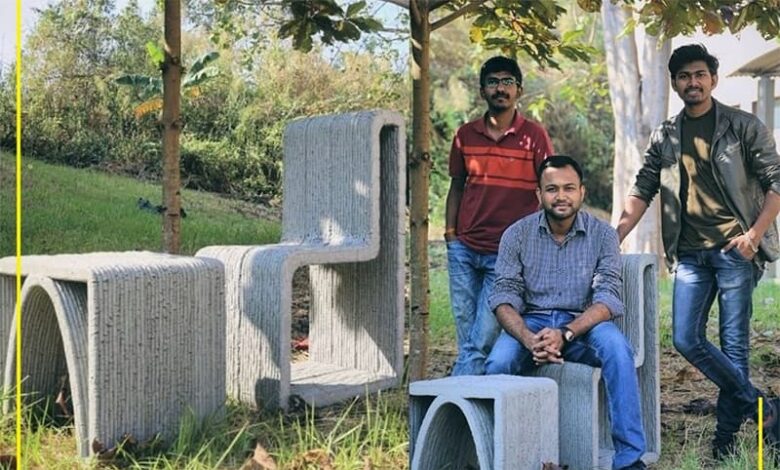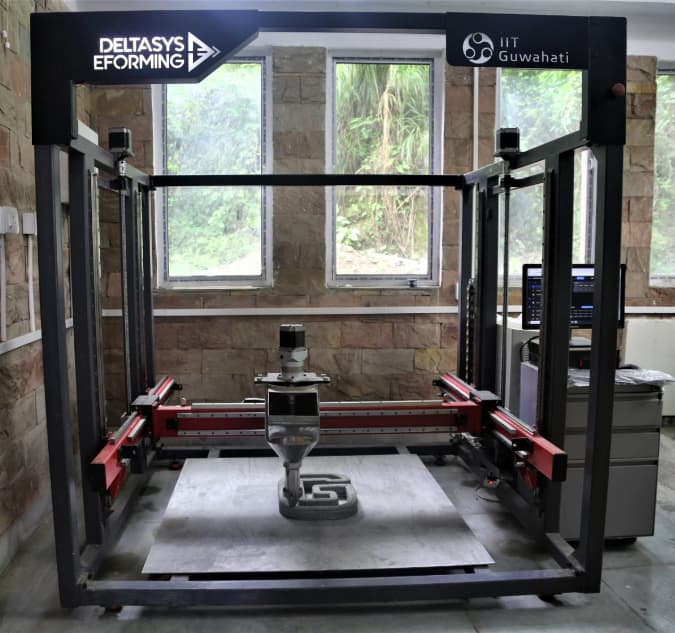IIT Researchers in India Develop 3D Technology

Researchers – Bhavesh Chaudhari, Dhrutiman Dey, and Dodda Srinivas – at the Indian Institute of Technology (IIT) Guwahati, located in India’s north-eastern state of Assam, have developed a new 3D printing technology that helps reduce the usage of concrete by up to 75%.
The researchers made use of a specially-developed printable concrete exploiting local industrial waste as binders to manufacture 3D printed furniture. The manufactured piece of urban furniture, having a height and width of 40 cms each with an arch-shaped support was completed in about 20 minutes, using Solidworks 3D CAD and Simplify3D software for modeling and slicing.

The concrete printer – jointly developed by IIT Guwahati and Deltasys EForming, a Belagavi-based startup company that manufactures 3D printing machines and provides engineering services about additive manufacturing – is capable of printing three-dimensional components up to one meter in size. Another advantage of 3D concrete printing is that optimum designs can be created with 75% less concrete, and without the use of a mould.
With concrete 3D printing gaining momentum in the building and construction industry, the research team believes that their on-demand, on-site 3D concrete printer will have a major role to play in construction applications in a multi-billion-dollar global market. For the future, the possibility of printing functional reinforced concrete using low carbon materials and underwater concrete printing are being explored.
Director of IIT Guwahati, Prof. T. G. Sitharam speaks on the importance of how 3D printing of concrete can be a technological solution for reducing carbon footprint in the building and construction industry. “From the Indian context, techno-economic analysis must be carried out that takes into account not only the environmental sustainability but also other aspects relating to quality, cost, labour, and maintenance associated with 3D printing,” adds Prof. Sitharam.
Recent developments in this field such as 3D printed houses and office spaces, footbridges, public schools, and even low-cost toilets has initiated a paradigm change in the field of construction.
Developments related to process automation and advanced print head design in the PI team is funded by India’s Department of Science and Technology (DST).

.gif)



